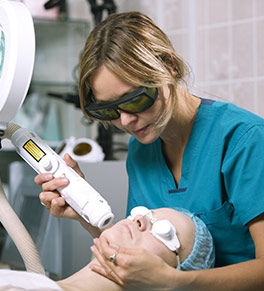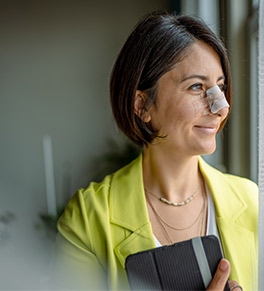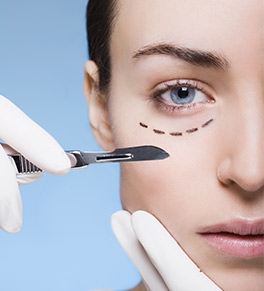
A good skin care routine should include both your face and your neck, and it can go a long way in keeping the skin on your neck hydrated and supple. Sometimes, though, you need a little more oomph than what your skin care products alone can deliver.
Just as your face shows signs of aging, so does your neck. In fact, your neck may show signs of aging even before your face! Loose skin, excess fat, and neck wrinkles can leave you feeling self-conscious about your appearance.
That’s where neck lift surgery comes into the picture. A neck lift 一 also called submentoplasty 一 is an aesthetic surgery procedure designed to restore a youthful appearance to your neck and turn back the hands of time. During a neck lift, Dr. Cecil Yeung tightens muscles and removes excess fat and loose skin, giving your neck a refreshed and more youthful appearance.
There’s no denying that a neck lift can do wonders to rejuvenate your look, but if you’re still considering your options, you may have questions about the recovery. That’s the topic the team at The Yeung Institute in Houston, Texas, tackles in this month’s blog.
Recovering from a neck lift
Before embarking on any surgical journey, it’s important to fully understand the recovery process. Some plastic surgeries can require a few weeks of downtime, so it’s important to prepare accordingly so your recovery period is as relaxed and stress-free as possible.
Recovery from neck lift can take up to two weeks, but this may vary depending on many factors, including your overall health, your commitment to following post-op instructions, and whether you’re having any additional procedures done at the same time, such as a facelift.
Immediately after surgery
Your neck lift is performed in our fully accredited surgery center, and it may take anywhere from two to four hours. Because you’ll need a friend or family member to drive you home, be sure to let them know how long your procedure may take.
Immediately after surgery, you may:
- Experience side effects of anesthesia (grogginess, nausea)
- Feel a tight sensation in your neck
- Have a bandage on your face and/or neck
- Have a thin tube placed to help with fluid drainage
- Feel sore
Our team provides specific post-op instructions so you can continue to recover at home. These instructions may include guidance for taking pain relief medication, how to care for your incision site, and when to return to the office to have your stitches removed, if needed.
Recovering at home
Once you’re at home, you can expect to see some bruising. Tenderness and soreness are both common and to be expected. While you might be tempted to apply a cold compress to reduce bruising, resist. Applying an ice pack on your neck could reduce blood circulation, which is not ideal when you want to heal from surgery.
The most important recovery tip is to follow all instructions from our team as carefully as possible. We provide guidance based on the type (or types) of surgery you have, what pain medication to take, how to change your bandages, and how to care for your stitches.
Other tips for recovering at home include:
- Eating nourishing meals that promote healing (bone broths, nutrient-dense vegetables, lean protein sources, and smoothies)
- Staying hydrated
- Keeping your stitches clean
- Avoid twisting or bending your neck, high impact activities, or jarring motions
- Sleep with your head elevated for two weeks (this helps reduce swelling)
Because the incisions are located underneath your chin, you don’t have to worry about visible scars.
Is a neck lift right for you?
Despite requiring downtime and recovery at home, a neck lift can help you experience a dramatic transformation. You might consider a neck lift if:
- You’re tired of hiding a turkey neck
- Your neck makes you feel older than your years
- You have excess fat on your submental area due to aging
- You have excess skin due to weight loss
- You have crepey skin on your neck
As with any plastic surgery, the first step is always a consultation at The Yeung Institute. Give us a call at 713-795-4885 or simply schedule a consultation online.









